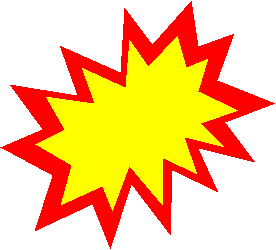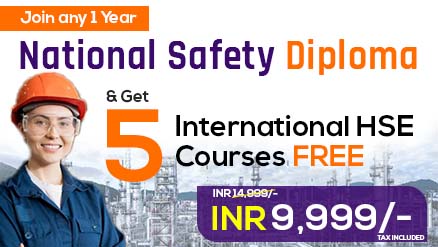
Electricity is an essential ingredient of our lives and has vast social implications to all nations. It is perhaps among the greatest and most important developments of the 20th century that continues to touch our lives daily. The economic and social developments of nations have been intrinsically coupled to electricity use. The lack of electricity, or insufficient electricity, is a concern of virtually all governments. Electricity is in fact one of the prime measures of a nation’s wealth and it defines the quality of life. Electricity generation does come with a cost to the environment and there are long term impacts to the health and safety of communities.
Electrical injuries rank as the fifth most common cause of occupational fatalities. The best way for anyone who works with electrical systems to prevent injury to themselves or others, as well as damage to property, is to practice proven electrical safety methods. Electrical safety programs in the workplace not only decrease the incidence of injury, but also protect companies and their employees from the financial ramifications of a work-related accident.
In the case of the electrical industry, safety is critical and the codes and regulations that determine safe practices are both diverse and complicated. Employers, electricians, electrical system designers, inspectors, engineers, and architects must all comply with safety standards listed in the National Electrical Code, OSHA and NFPA 70E.
 Upcoming Safety Diploma Course Batch Details – Book Now
Upcoming Safety Diploma Course Batch Details – Book Now
Nebosh IGC Course Fees in India

Electrical Safety Course Training
This course empahsizes on the various regulations and practices for electrical safety and translate these complicated standards into easy-to understand terms. Even veteran master electricians will find it informative and gain a new understanding of how to minimize their exposure to possibly injury.
It provides best international management practices for the safe handling operations of personnel working in generation, transmission and dealing with power distribution issues. And it is intended for the electricity generating, power transmission and distribution sectors.
The course book material has been prepared by the staff of Princeton Energy Resources International (PERI). PERI has a long history of working in the power sector with staff and principals’ experiences stretching back decades. PERI has assembled its own decades of knowledge and surveyed the international literature to assemble this reference for practitioners in the electricity sector.
Electrical Safety Course Fees


Chapters covered in Electrical Safety Diploma
Chapter 1: addresses procedures and provides guidance on how companies can effectively evaluate their safety programs. Good safety records can only be achieved when there is a cultural basis for working safely and applying best management practices within the corporate environment. This chapter covers the topics of creation of a safety culture within the organization, adoption of good housekeeping practices and employee orientation.
Chapter 2: covers instrumentation, specifically, meters and various types of monitors and sensors that are relied upon by industry for air quality testing, noise level testing, electronics testing, and others.
Chapter 3: covers general best safety practices in the areas of chemicals, performing job hazards assessments, the types and use of personal protective equipment, first aid and resuscitation, fire prevention and protection, and safely working in excavations and other confined spaces and other areas.
Chapter 4: addresses the safe use of various field equipment, including hand tools and workshop tools and machinery, ladder and scaffolding safety, forklift safety, crane operation, work platforms, safely working with compressed gas cylinders, drum handling safety, and safe welding practices.
Chapter 5: covers electrical safety. This chapter includes detailed discussions and best practices for electrical shock and lockout and tag out procedures along with sample forms to use in the field, lineman general safe work practices, electrical safe work practices planning, safe use of electrical equipment, working near power lines, and functional safety practices for electrical power transmission.
Chapter 6: covers the subject of worker safety rules. Topics covered include critical incident stress, working with toxic chemicals, working with electrical protective devices, hand protection, performing hazard assessments and additional guidance on personal protective equipment selection, sanitation and industrial hygiene. This section covers additional guidance and topical discussions on marking and labeling physical hazards, the use of accident prevention signs and posters, fire protection and other topics.
- Candidates/ Delegates who successfully complete and obtain the National safety diploma Course (approved by the Govt. of India) could further apply for a membership status with IIRSM. Awarding of the membership is at the discretion of IIRSM provided they have met the required guidelines for the same.
- Successful candidate will get Certificate & Mark list issued from Central Board of Examination & National Development agency, Promoted by Govt. of India
- Recognized in most countries
- Certification considered one year count increment in your educational qualification
The certificate is also recognized to be attested by
Consular Services : i.e. Indian consulate
Ministry of External Affairs : India & any other ministry of foreign affairs that includes middle east region.
Our Occupational Health & Safety Courses
-
NEBOSH Courses
»NEBOSH IGC »NEBOSH IDIP »NEBOSH PSM » NEBOSH HSW/HSA »NEBOSH Incident Investigation -
IOSH Courses
» IOSH Managing Safely » IOSH Working Safely -
OSHA Courses
» OSHA General Industry » OSHA Construction Industry
Our Industries Safety Diploma Courses
- Contact Us
- Chennai –
+91 8098819456 - Kochi –
+91 8089011467 - Hyderabad –
+91 8885823208 - Patna –
+91 9566944184 - Mumbai –
+91 7208518616 - Vizag –
+91 7799527512 - New Delhi –
+91 9811521686 - Kolkata –
+91 9163848802 - Bangalore –
+91 8939440431 - Ahmedabad –
+91 9324148531 - Chandigarh –
+91 8130783230 - Odisha –
+91 8420399305 - UP –
+91 9176456527 - Pune –
+91 8928320577 - Pondicherry –
+91 8939440431 - Tamil Nadu –
+91 8098819456 - Kerala –
+91 7358120978 - Kerala –
+91 8089011463
FAQ’s
Are there any Seminars for Diploma in Electrical Safety Course?
There will be a 12-day seminar session for students at extra fees(not mandatory) at Green World Group Education Center in Chennai, India, only when a minimum number of candidates are enrolled for it.
Those who are willing to join the course can visit https://greenwgroup.co.in/enquiry-form/ to fill the details so that we shall make suitable arrangements for your training needs.
Experts are available to students on all working days to clarify their doubts in the subjects through emails and telephonic communication.
When will i get the certification?
Successful candidates are provided certificates within 30 days from the announcement of result. Certificate & Marks will be issued from Central Board of Examination & National Development agency, promoted by the Government of India. Separate certificates will be issued to candidates who passed with distinction and first class.o.












